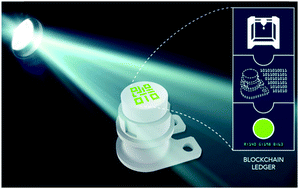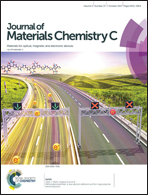Enhanced anti-counterfeiting measures for additive manufacturing: coupling lanthanide nanomaterial chemical signatures with blockchain technology†
Abstract
The significant rise of additive manufacturing (AM) in recent years is in part due to the open sourced nature of the printing processes and reduced cost and capital barriers relative to traditional manufacturing. However, this democratization of manufacturing spurs an increased demand for producers and end-users to verify the authenticity and quality of individual parts. To this end, we introduce an anti-counterfeiting method composed of first embedding engineered nanomaterials into features of a 3D-printed part followed by non-destructive interrogation of these features to quantify a chemical signature profile. The part specific chemical signature data is then linked to a securitized, distributed, and time-stamped blockchain ledger entry. To demonstrate the utility of this approach, lanthanide-aspartic acid nanoscale coordination polymers (Ln3+-Asp NCs)/poly(lactic) acid (PLA) composites were formulated and transformed into a filament feedstock for fused deposition modeling (FDM) 3D printing. In the present case, a quick-response (QR) code containing the doped Ln3+-Asp NCs was printed using a dual-extruder FDM printer into pure PLA parts. The QR code provides a searchable reference to an Ethereum-based blockchain entry. The QR code physical features also serve as defined areas to probe the signatures arising from the embedded Ln3+-Asp NCs. Visible fluorescence emission with UV-excitation was quantified in terms of color using a smartphone camera and incorporated into blockchain entries. Ultimately, linking unique chemical signature data to blockchain databases is anticipated to make the costs of counterfeiting AM materials significantly more prohibitive and transactions between those in the supply chain more trustworthy.



 Please wait while we load your content...
Please wait while we load your content...